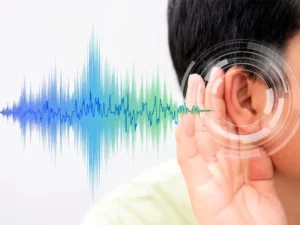
Get to know the silent yet real and adverse, noise pollution effects has on your hearing health in this informative piece.

In our bustling world, noise is a constant companion. From the hum of traffic to the drone of machinery, we’re surrounded by sound.
This constant noise isn’t just an annoyance. It’s a form of pollution. Noise pollution, to be precise.
But what impact does this have on our health? Specifically, our hearing health?
Research suggests a strong link between noise pollution and hearing loss. Prolonged exposure to loud noise can damage our ears, leading to hearing impairment.
In this article, we delve into the connection between noise pollution and hearing loss. We’ll explore the science behind it, the risks involved, and how to protect your hearing.
Whether you live in a bustling city or work in a noisy environment, this information is crucial. Let’s dive in.
Noise pollution, also known as sound pollution, is an often overlooked environmental health issue. It refers to harmful or annoying levels of noise produced by human activities.
This type of pollution can disrupt not only our peace and quiet but also our health. It’s a significant cause of stress, sleep disturbances, and as we’ll discuss further, hearing loss.
Noise pollution is everywhere, especially in urban areas. The hustle and bustle of city life contribute significantly to the noise levels we experience daily.
Here are several prevalent sources of noise pollution:
Each of these sources contributes to the overall noise pollution in our environment, potentially impacting our hearing health.
Hearing loss is a common health issue that affects millions of people worldwide. It’s a reduction in the ability to hear sounds in one or both ears.
The severity of hearing loss can vary greatly. Some people may have a mild loss, while others may be completely deaf. It can be temporary or permanent, sudden or gradual, and it can affect people of all ages.
There are three main types of hearing loss: conductive, sensorineural, and mixed.
Each type of hearing loss has different causes and treatments, and noise pollution can contribute to all of them.
Sound is a form of energy generated through vibrations. When an object oscillates, it produces sound waves that propagate through the atmosphere to our auditory receptors. Subsequently, these sound waves are transformed into signals that our cerebral cortex (brain) interprets.
However, when the sound is too loud, it can damage the sensitive structures of the inner ear and lead to hearing loss. This is known as noise-induced hearing loss. It can be caused by a one-time exposure to an intense sound or by repeated exposure to loud sounds over an extended period.
The intensity of a sound is quantified in units known as decibels (dB). The higher the decibel level, the louder the noise, and the greater the risk of hearing damage.
Here are several frequently encountered sounds along with their corresponding decibel levels:
According to the World Health Organization, exposure to noise levels above 85 dB for more than eight hours can be harmful. Prolonged exposure to noise above this level can cause permanent hearing loss.
Noise-induced hearing loss is a significant public health issue. According to the Centers for Disease Control and Prevention, it is one of the most common work-related illnesses in the United States.
Moreover, it’s not just workers who are at risk. With the increasing noise pollution in our cities and our homes, more and more people are exposed to harmful noise levels. This includes children and teenagers, who are increasingly exposed to loud music through headphones and at concerts.
The World Health Organization (WHO) has set guidelines for safe noise exposure to protect our hearing health. According to WHO, adults should not be exposed to noise levels above 85 dB for more than eight hours a day.
For children, the safe limit is even lower. The WHO also recommends regular breaks from noise exposure and the use of hearing protection devices in noisy environments. These guidelines are crucial in preventing noise-induced hearing loss and promoting good hearing health.
Preventing noise-induced hearing loss involves both personal and collective actions. On a personal level, we can limit our exposure to loud noises and use hearing protection devices when necessary.
On a collective level, we can advocate for stricter noise regulations and better urban planning to reduce noise pollution in our cities.
Hearing protection devices such as earplugs and earmuffs can significantly reduce the risk of noise-induced hearing loss.
Addressing noise pollution is vital for our health and well-being. By understanding the link between noise pollution and hearing loss, we can take steps to protect our hearing and create quieter, healthier environments. It’s a challenge that requires collective action, but the benefits are worth the effort.




©️ 2023 HealthQuo. All rights reserved.
Website by DARIS